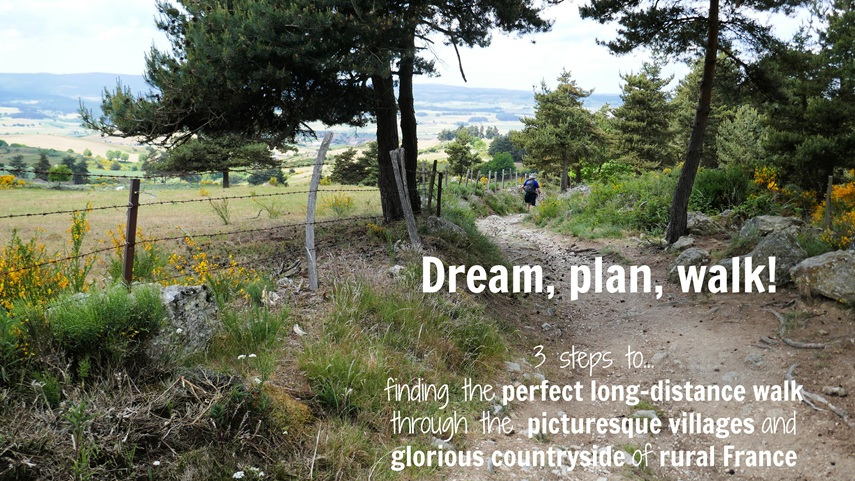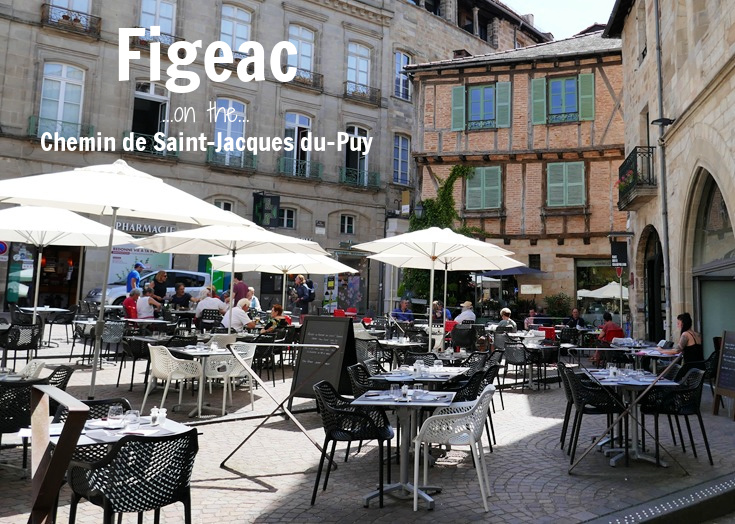
(Published October 2013, last updated June 2025)
Classified as a ville d’art et d’histoire, and filled with medieval stone and timbered houses, the backstreets and crooked alleys of Figeac are a delight to wander through.
If you have been walking the Chemin de Saint-Jacques since Le Puy-en-Velay and have not yet stopped for a rest day, Figeac is the perfect place to take a break. The town boasts a full range of services—dozens of cafés, patisseries, chocolateries as well as the ever-useful banks, doctors, dentists and ATMs!

The Tourist Office is located on Place Vival in la Maison de la Monnaie
Call in to the Tourist Office which is located on Place Vival in la Maison de la Monnaie. This medieval building is considered to be one of the best examples of a merchant house in France. On the ground floor, the shop opened onto the street while living quarters for the merchant and his family were located on the upper floors.
At the Tourist Office, ask for a copy of Les clefs de…Figeac—a map of the town which guides the visitor on a two-hour walk past thirty points of interest, including museums, churches and noble houses. Each site is marked with a small plaque displaying a numbered key and the history of each building is described more fully on the map.
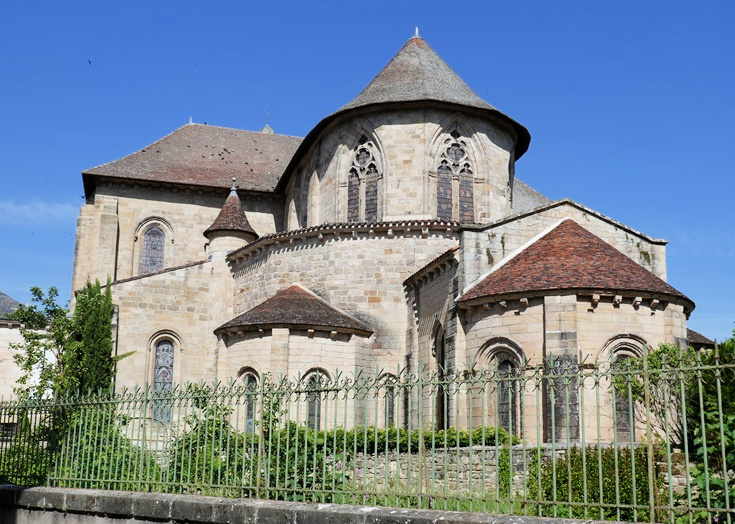
The abbey church of Saint-Sauveur
Dominating the square near the river is the larger of the two medieval churches in Figeac. Dedicated to Saint-Sauveur, the church is the last remaining building of the Benedictine Abbey around which the town grew in the Middle Ages. Although it suffered damage during the Wars of Religion, it was partially constructed in the seventeenth century and the interior is richly decorated with wood carvings.
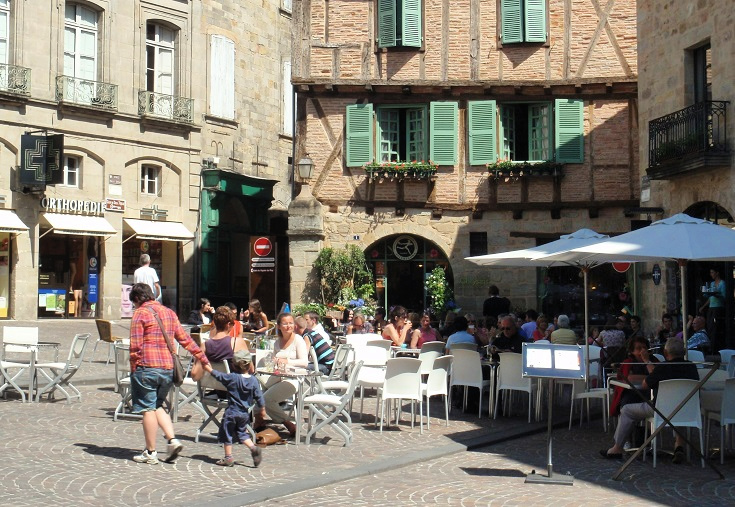
Place Champollion is a popular, and charming, square in the centre of Figeac
There are many beautifully preserved half-timbered houses and stone buildings dating from the fourteenth, fifteenth and sixteenth centuries but keep an eye out for Maison du Griffon in Place Champollion, the oldest house in Figeac built in the twelfth century.
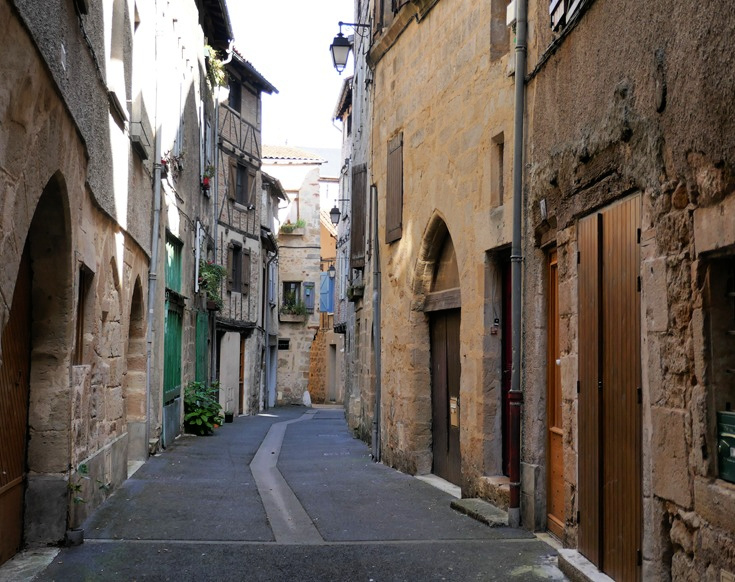
In summer, guided tours which focus on a particular theme, such as architecture or the city walls and gates, leave from the Tourist Office, providing a more in-depth exploration of the town.
And if you’ve done enough walking over the last few days and weeks, a tourist train makes a 45-minute journey around town every hour on the hour (except for lunch), every day (except for Saturday when the market is in full swing) in July and August.
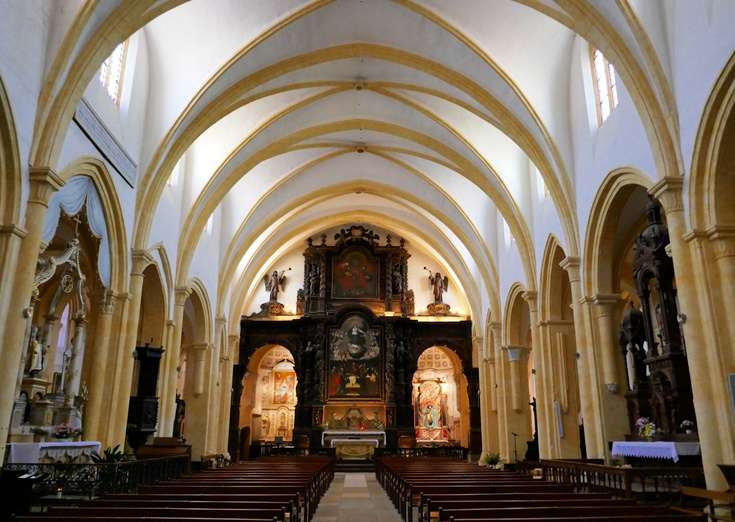
The interior of Notre-Dame du-Puy (stop 22 on Les clefs de…Figeac)
Figeac was the birthplace of Jean-François Champollion, whose success in deciphering the hieroglyphics of the Rosetta Stone gave the world a greater understanding of life in ancient Egypt. His home is now a museum—Musée Champollion—dedicated to the history of writing throughout the world.
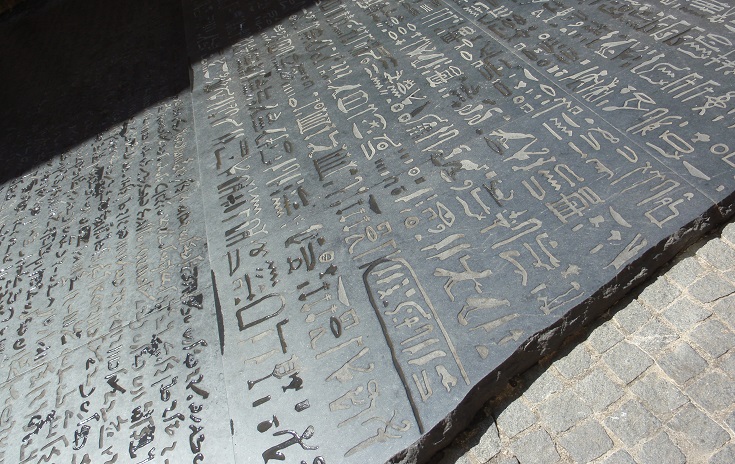
Replica of the Rosetta Stone by artist Joseph Kosuth in Place des Écritures
Next to the museum, in Place des Ecritures, is a replica of the Rosetta Stone by American artist Joseph Kosuth.
The museum is open from 10h30 until 18h30 every day in July and August, with slightly reduced opening hours at other times of the year. An audioguide is available in French, English, Spanish and German.
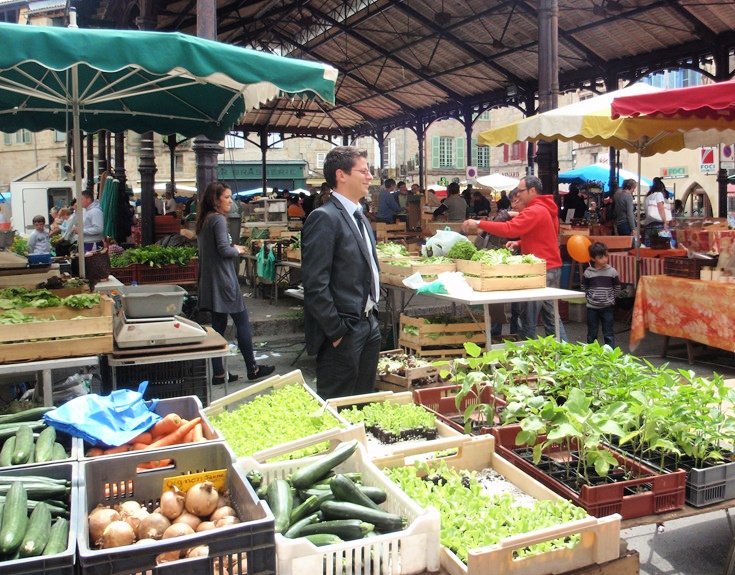
Saturday morning market in Place Carnot
Fresh food markets in France are always a treat and Saturday morning in Figeac is no exception.
This is the perfect opportunity to stock up on trail mix—fresh figs, olives, dried fruits, prunes, nuts and a wide variety of locally grown fruit. And, of course, there is fresh bread, locally produced cheeses and wine for a truly indulgent picnic. If you can eat it quickly or have access to a fridge, treat yourself to some locally-made yoghurt which tastes unlike anything ever sold in a supermarket.
If you have a day or two to spare, you’ll find plenty to do in the area around Figeac.
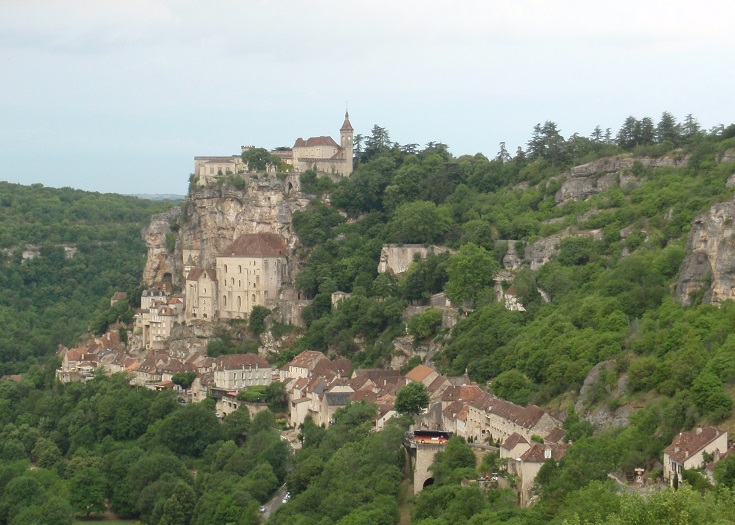
The view of Rocamadour from l’Hôpitalet
Forty-five kilometres (28 miles) north-east of Figeac is Rocamadour (also accessible by bus or train), the second most important religious site in France (after Mont-Saint-Michel) and recently classified as one of France’s ‘most beautiful villages’. Legend has it that Zaccheus, also known as Armadour and a servant of Mary, mother of Jesus, came here to live in the caves as a hermit. His perfectly preserved body was discovered in 1166 and was buried beneath the steps of the chapel. Pilgrims have been flocking here ever since, often climbing the 216 steps to the church on their knees.
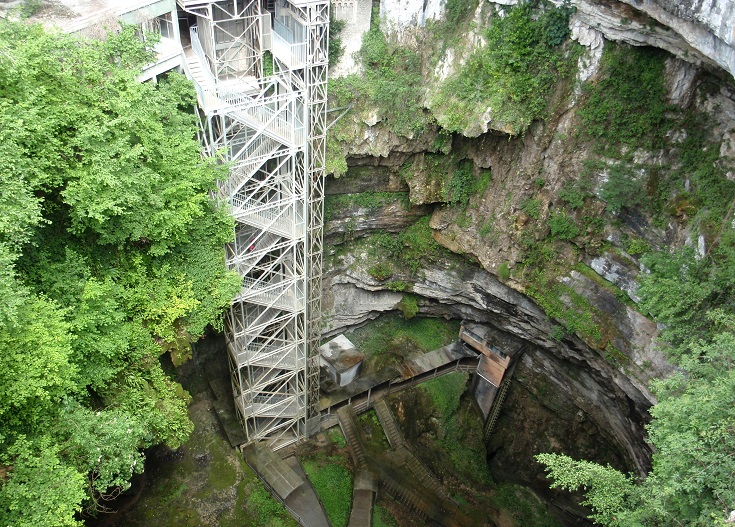
Gouffre de Padirac
Not far from Rocamadour, is the Gouffre de Padirac (also accessible by bus or train), a series of underground lakes and caves 103 metres below the surface. From Easter until October, you can join a guided tour that takes you by boat along an underground river before you disembark and continue on foot past majestic stalagmites and stalactites.
Venture north for a further one-hour drive and stop to explore one of nine of France’s ‘most beautiful villages’. My pick would be Collonges-la-Rouge but you can discover them all, including Rocamadour and Gouffre de Padirac on a long-distance walk from Martel to Rocamadour.)
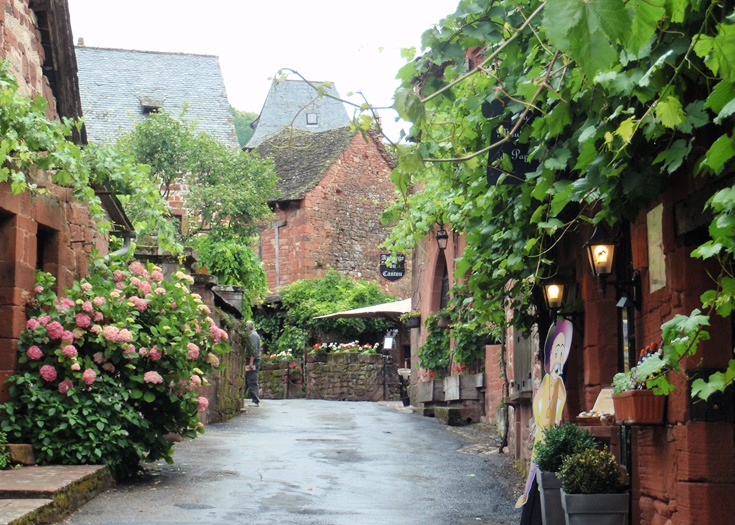
The ‘most beautiful village’ of Collonges-la-Rouge
If your visit to Figeac is part of the long-distance walk along the Chemin de Saint-Jacques, chances are you passed through the most beautiful village of Conques a couple of days ago and are looking forward to visiting Saint-Cirq-Lapopie later this week.
But perhaps not? Then now is a good time to rent a car and head out into the surrounding countryside.
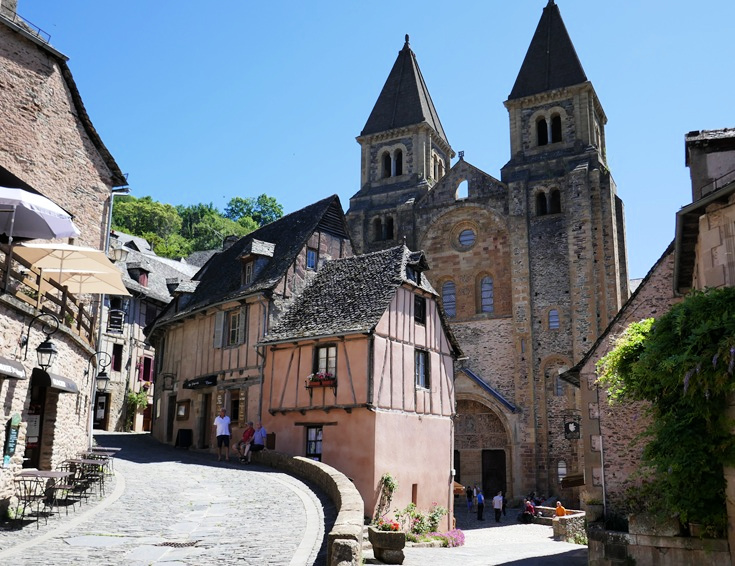
The abbey church in Conques towers above the surrounding buildings
Fifty kilometres (31 miles) to the east of Figeac is Conques which has been an important stop on the pilgrims’ trail since the ninth century when an abbey was built here in the valley to house the relics of Sainte-Foy, a thirteen year old girl, martyred in 303 AD in nearby Agen for her refusal to renounce her Christian faith. After the initial decree that she be burned alive on a metal grill resulted in a public outcry, Foy was thrown into prison with other Christian supporters. Still, she refused to deny her faith and was later beheaded, alongside her fellow prisoners.
In 866 AD, the relics of Sainte-Foy were ‘borrowed’ from the abbey in Agen and brought to Conques where a new church was built in her honour. The relics bestowed much prestige on the village and it has been an important stop on the pilgrimage to Santiago de Compostela ever since.
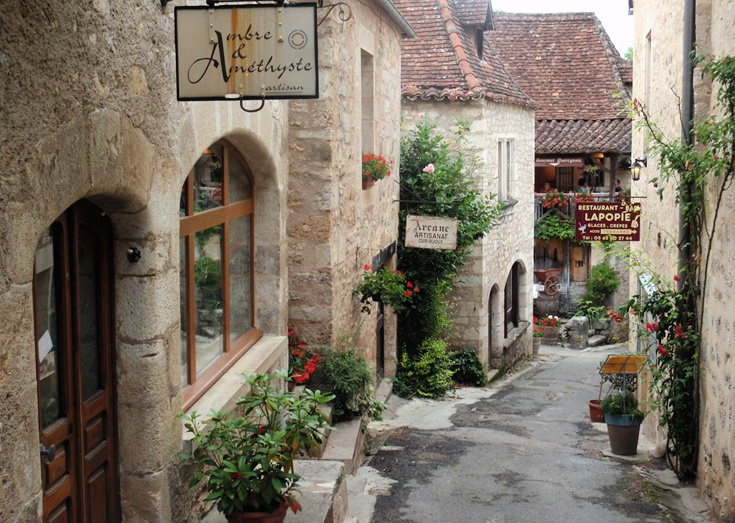
Saint-Cirq-Lapopie
Fifty-four kilometres (34 miles) to the west of Figeac is the most beautiful village of Saint-Cirq-Lapopie (also accessible by bus), the painted caves of Pech Merle and the ruins of the abbey at Marcilhac-sur-Célé.
Saint-Cirq-Lapopie and Marcilhac-sur-Célé can be explored at your leisure but entry to Pech Merle is limited to 700 visitors per day. It is strongly recommended that you reserve your tickets on-line, in advance, particularly during July and August. The caves include some of the most beautifully preserved pre-historic rock paintings and natural rock formations in France.
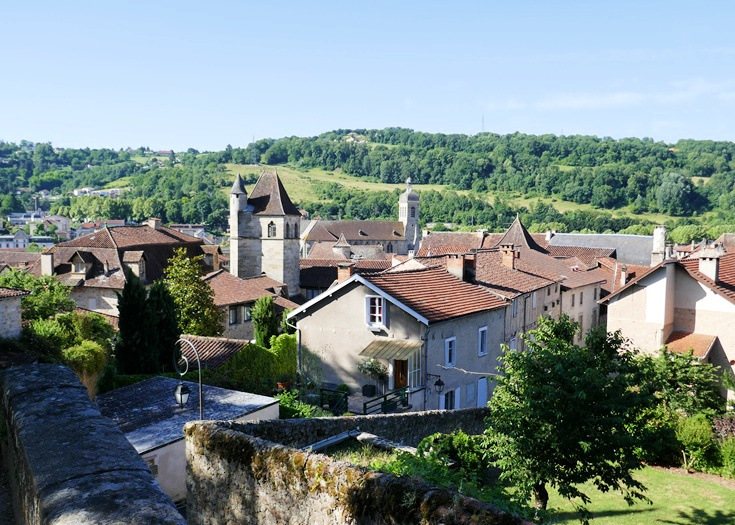
View over the rooftops of Figeac from the northern end of town
FAST FACTS
Which long-distance walk in France visits Figeac?
Chemin de Saint-Jacques du-Puy (Stage 2: Aumont-Aubrac to Figeac and Stage 3: Figeac to Cahors)
Look inside the CHEMIN DE SAINT-JACQUES (PDF) guidebook
Where is Figeac, France? Find it on Google maps
Figeac is located 251.5 kilometres (157.2 miles) along the Chemin de Saint-Jacques – a relaxed 15-day walk from the starting point of Le Puy-en-Velay but if you are pressed for time, Figeac can be reached quite comfortably in 12 days without sacrificing any of the highlights.
Click through to find my suggested itinerary for all five stages of the walk then click through onto each of the five stages to find faster itineraries.
If you prefer to set your own agenda, I share the steps I take to plan my itinerary on any long-distance walk.
Transport options to and from Figeac
Train line Aurillac—Figeac—Toulouse connects Figeac to Aurillac and Toulouse (and several other towns) which both have daily train connections to Paris.
Train line Rodez—Figeac—Brive connects Figeac to Decazeville (on the GR65 path), to Brive-la-Gaillarde and Rodez for train connections to Paris, and to Rocamadour—a magnificent medieval city which makes a perfect day trip from Figeac.
Lot bus line 889 Figeac—Cahors connects Figeac with several other villages along the next stage of the Chemin de Saint-Jacques including Faycelles, Cajarc, Tour-de-Faure (Saint-Cirq-Lapopie), Bouziès, Vers and Cahors.
Lot bus line 876 Figeac—Rocamadour—Padirac operates on weekends and public holidays from June to September, with daily services in July and August, connecting Figeac with Gramat, Rocamadour and Gouffre de Padirac.
Tourist Office in Figeac
You’ll find the Tourist Office on Place Vival. Opening hours are listed on the Tourist Office website.
Also on the Tourist Office website, download a map of the town, the tourist map Les clefs de…Figeac and a full list of guided visits.
Accommodation in Figeac
You’ll find a good range of accommodation in Figeac, with something for every taste and budget.
Hotels
Hôtel Le Pont d’Or
Hôtel le Quatorze
Hôtel des Bains
Hôtel le Champollion
Hôtel the Originals
Hôtel du Faubourg
Hôtel le Foirail
Hôtel Mercure Viguier du Roy
Chambres d’hôtes
Conquans (4 rooms, 13 people)
Le Soleilho (4 rooms, 12 people)
Le Chemin des Anges (4 rooms, 11 people)
Les Pratges (4 rooms, 8 people)
Lilas Rose (2 rooms, 4 people)
Gîtes
Gîte d’étape du Gua (4 rooms, 15 people)
Gîte Antoine, le pelerin (4 rooms, 14 people)
Gîte le Pont du Pin (9 people)
Gîte le Coquelicot (8 people)
Gîte le Maquis
How to book accommodation in French
Where to eat in Figeac
There is a wide variety of cafés and restaurants in Figeac and you’ll find you’re never too far from a good meal. There are also several patisseries and a very good chocolate shop!
Fresh food markets are held in Place Champollion every Saturday morning.
Practical tips for long-distance walking—preparation, packing and avoiding blisters
Purchase the Chemin de Saint-Jacques (PDF) guidebooks
Purchase five guidebooks covering Le Puy-en-Velay to Saint-Jean-Pied-de-Port
